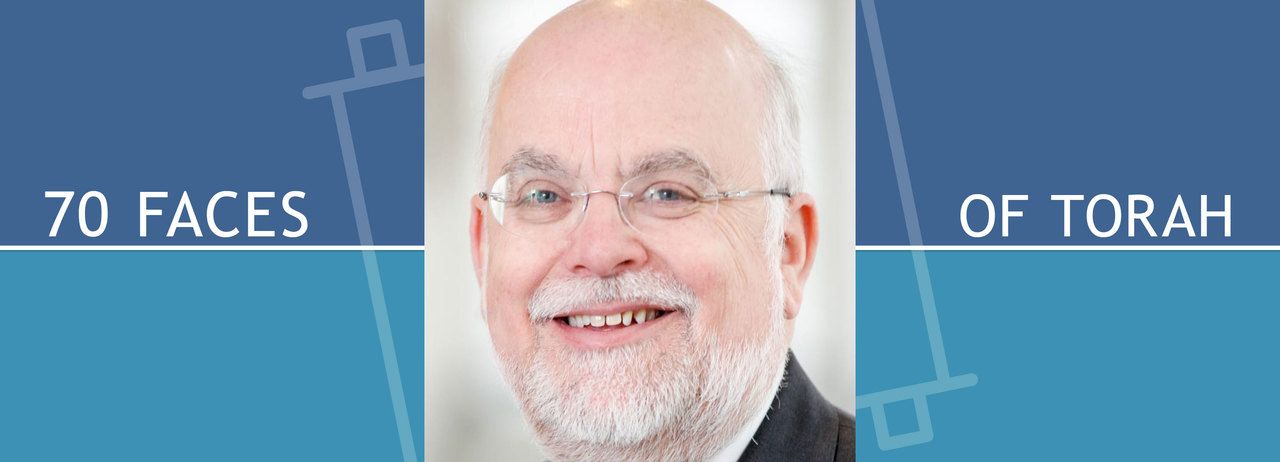Holidays Hidden are the things we see

Shavuot 5780
Looking out the window, I see cardinals and robins, rabbits and squirrels, blue empty skies—in the last two months of isolation, I have come to notice my beautiful environment more than ever before. In this hidden-away state, more has been revealed to me than I experienced when I was outside hurrying to the places I needed to go. This has been a revelation to me. Hidden away from the melee of the world, I have learned, as Rabbi Abraham Joshua Heschel, says, that “hidden are the things we see.”
This aspect of hiddenness and revelation intrigues me: what do we see and what is hidden? What have we begun to see things that we didn’t notice before.
The Zohar (volume 3) teaches that the giving of Torah, traditionally associated with Shavuot, is both a revealing and concealing act. Through words of Torah, we learn the practice of living Judaism, ways to be in the world, and virtues to aspire to in our deeds and intention. The very content of God’s revelation—matan Torah—is bound up with our grasp of our purpose and meaning in the world, both as individuals and in our respective communities—edot. On Shavuot, the Jewish People reaffirm the acceptance of this gift of Torah to enhance and direct our lives and God’s purpose for creation and revelation leading to a world redeemed.
But the very letters and words of Torah also contain hidden meanings that conceal realities that are not yet apparent and remain still to be uncovered. There is a mystery to the nature of our existence and its meaning, as well as to the very nature of God and God’s purpose for us. What has the narrative of a creation story yet to tell us about our relationship to the planet and our responsibility for its vitality and diversity? Can a Levitical injunction for a holiness code inspire economic communities of justice and equity? And will humanity come together as one family to live productively side by side in peace? Despite the revelation of Torah, these things remain concealed in our capacity to understand.
As we come to know that “hidden are the things we see,” our time of waiting to be released from self-isolating becomes all the more important. This is the time to consider whether the world we re-enter can or should really be the same one we left behind? Wouldn’t we want the planet to thrive as we thrive? Couldn’t we solve our inequities and prejudices with a mere change of heart? Have we come to know the value of those who labor for our health and welfare, provide us food and clean water to sustain us?
Shavuot is matan torah—a time of giving of the Torah. But what does this giving mean? Is this a Torah from heaven? Perhaps the most contentious theological dilemma in Judaism is the origins of the Torah and its implications for commandment and obligation. However Torah min Hashamayim—Torah from Heaven—can make more sense if we translate it as Torah with heaven. If Torah reflects the moral order for the universe and echoes the harmonies of the created world then we can say it is a teaching of life to which we would want to be commanded and obligated. How can our new Torah—our new understanding of revelation—better match with shamayim? If our practice—our mitzvot—do not reflect the higher purposes of life, then it is not Torah at all. To see the destruction of climate change, of economic disparity, of food insecurity, of racial and gender prejudice in a diverse world is to disconnect Torah from heaven. Shavuot comes and asks us to reaffirm matan torah in our lives, a Torah revealing of a moral order and moral commandment in the world.
We have been counting the days up towards Shavuot, our peak religious experience of revelation. We also have been waiting for the “great awakening,” when we can all come out of isolation and meet again in communities and schools and synagogues. The term “great awakening” echoes the religious revivals of the 18th and 19th centuries in which societies shifted, balances of power changed, and new spiritual and religious interpretations emerged. Can we see this time of COVID-19 as a time for societal change again? During our hiddenness, we have had time to reflect on the world we left behind, and so many things have been revealed to us. The Hasidim remind us that the words olam (world) and alam (hiddenness) are connected, denoting that our world is a mystery still to be seen and discovered.
Our windows reveal what is outside as we wait to be released. But windows work both ways—we can be seen through them, as well. If we are shut away, how will the outside world identify us for our intended role as “light to the Nations.” When you go to the Venetian Ghetto and stand in the middle of the square and look at the buildings on three sides, you cannot tell at first glance what they are. They are all interconnected, of different heights and styles—a jumbled mass of walls, doors and windows. However, there is a secret visual cue for the one who knows. The buildings with five windows, representing the Five Books of Torah, are synagogues—hidden away amidst the cluster of apartments, shops and cafes. From the public square, these windows are the hint that holiness is present and that “hidden” are things that we should now begin to see more clearly.
Rabbi Dr. Michael Shire is Chief Academic Officer at Hebrew College in Newton Centre, MA.

